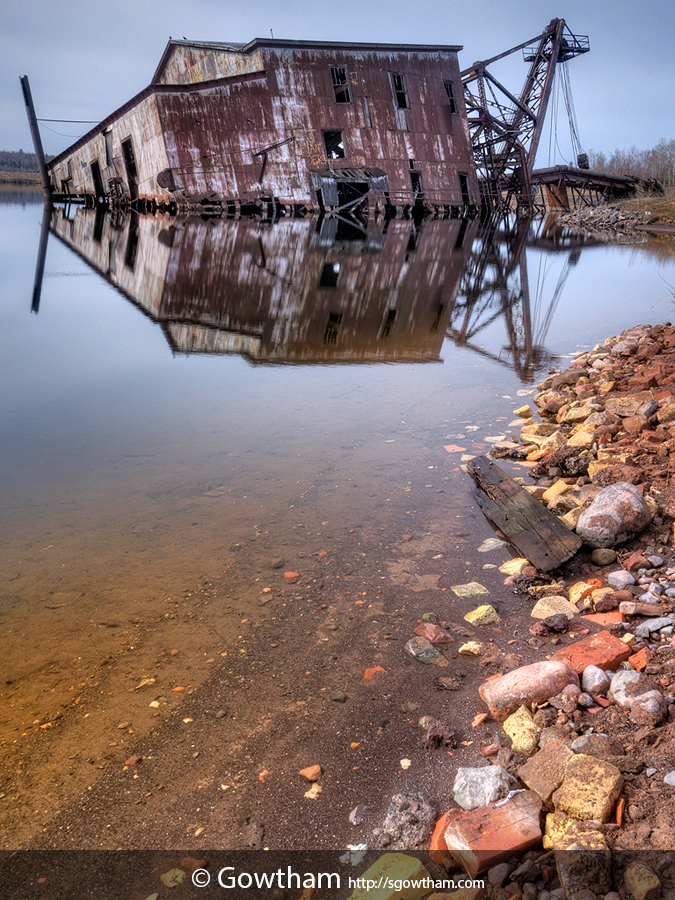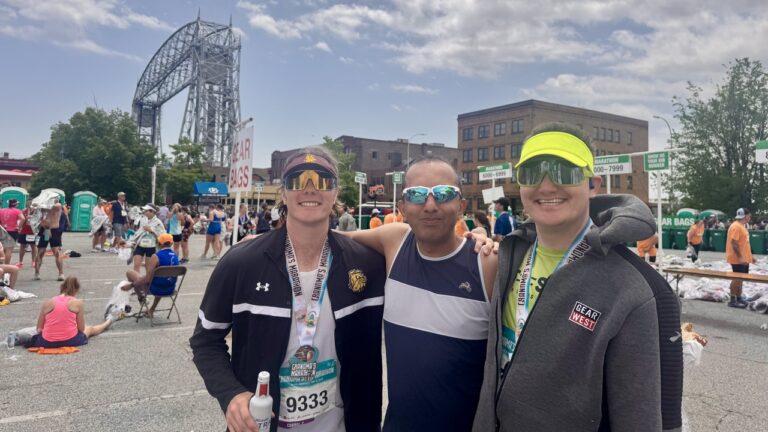In the hay day of copper mining in the Keweenaw, Copper was mined from the rocks with the use of stamp mills. The stamp mills would crush the brittle rock leaving the copper behind. The trailings (or stamp sands) left over from the mining were just dumped into the lake. As stamping technologies improved, these trailings could be pumped out of he lake and stamped further to yield more copper – missed out initially. In 1913, the Boston based Calumet and Hecla Mining Company built the C&H Dredge #1 and used it at their Lake Linden Reclamation Plant. It could process over 10,000 tons of sand per day. Its 141′ suction pipe could work 115 feet below water.
This was later sold to the Quincy Mining Company in 1951, and became known as the Quincy Dredge #2. This proved to be a pretty good decision as Quincy Dredge #1 sank in a winter storm in January 1956. Quincy Dredge #2 was used at the Mason reclamation facility until 1967. It has been nearly four decades since this dredge was retired but it sure untiringly serves as a cannot be missed attraction on Torch Lake shores along M26.
EXIF and other information
| Archive ID | n21_107-9479 |
| Date and Time | 2010-04-10 10:13:43 |
| GPS Date and Time | Image does not include relevant information |
| GPS Location | 47.14505 N, -88.45922 E, 625 ft (Goolgle Map: Pin | Directions) |
| Camera | Nikon D200 |
| Lens | AF-S DX Zoom-Nikkor 12-24mm f/4G IF-ED |
| Focal Length | 19.0 mm (35 mm equivalent: 28.0 mm) |
| Mode | Aperture-priority AE |
| Shutter Speed | 1/40 second(s) |
| Aperture | f/11.0 |
| ISO | 200 |
| Exposure Bias | 0 |
| Flash | No |
| Filters | None |
| Light Value | 11.2 |
| Hyperfocal Distance | 1.61 m |
| Focus Distance | 2.82 m |
| Depth of Field | inf (1.03 m - inf) |
| Field of View | 65.1 deg (3.60 m) |
| Tripod | Yes |
| Notes/Remarks | ±2 stop and HDR using Photomatix Pro |



